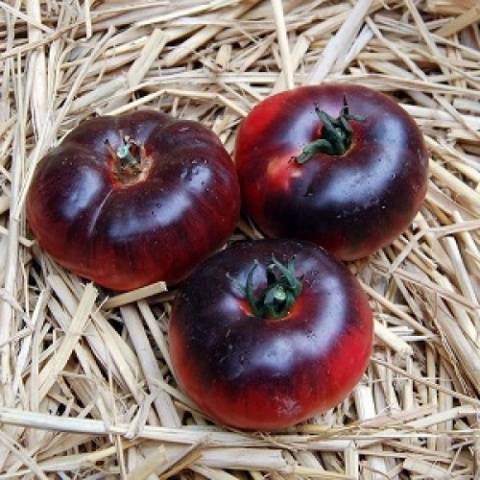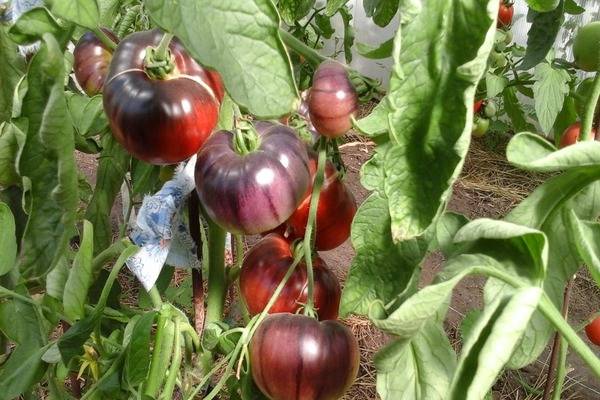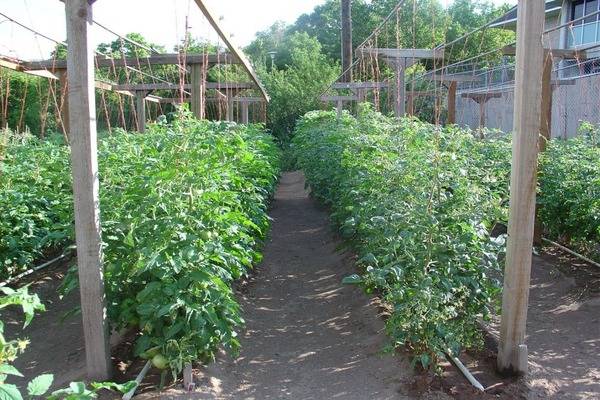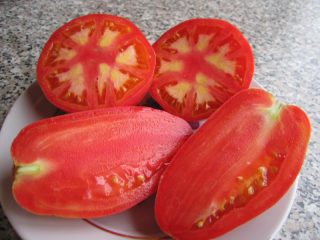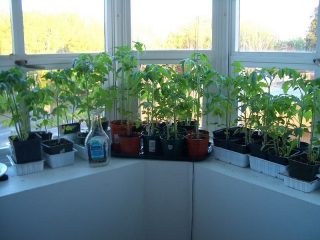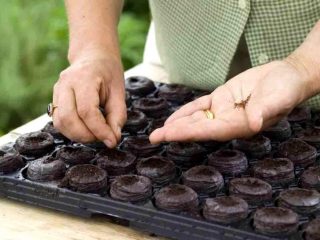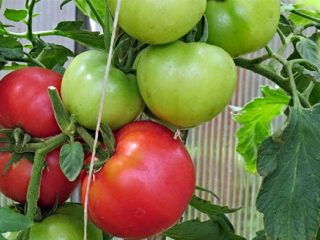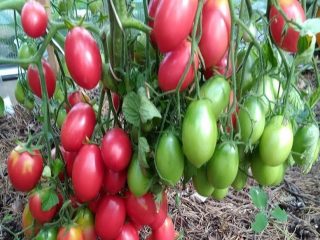Content
The fruits of some tomato varieties look nothing like traditional red tomatoes. However, the non-standard appearance attracts the attention of many lovers of the unusual. The tomato variety Amethyst Jewel makes a mixed impression. Judging by the reviews of summer residents, tomatoes have a pleasant taste with a slight sourness and juicy pulp, slightly oily in feel.
Characteristics of the variety
The Amethyst Jewel tomato is a medium-ripening tomato that appeared as a result of breeding work by American Brad Gates. Indeterminate bushes grow quite tall (more than 180 cm) and require pinching.
The fruits ripen with a round, flattened shape and gain weight of approximately 150-210 grams. The skin of ripe Amethyst Jewel tomatoes is quite dense and not prone to cracking. The color of the fruit changes interestingly as it ripens: tomatoes at technical ripeness have a light purple hue, and at final ripening, the area near the cutting becomes black and softly dissolves into a bright color at the top.
When cut, Amethyst Jewel tomatoes have a pinkish tone (as in the photo).Juicy fruits go well with various vegetables in salads and are great for canning. A light hint of exotic fruity notes gives salads a piquant flavor.
Features of the tomato variety Amethyst Jewel:
- can be grown in a greenhouse and open ground;
- bushes are formed spreading, medium leafy. In an open area, the stem does not grow higher than one and a half meters;
- in greenhouse conditions, the tomato variety Amethyst Jewel begins to bear fruit 110-117 days after seed germination;
- 5-6 fruits are tied in a brush;
- high productivity;
- tomatoes are well stored and tolerate long-term transportation;
- long-term fruiting. In open ground conditions, the fruits continue to ripen in September, and in greenhouse conditions even later.
The Amethyst Jewel tomato variety is characterized by resistance to many diseases. Some of the disadvantages of the tomato include its sensitivity to weather changes. The plant does not tolerate dry heat and low temperatures. For normal development of tomatoes and abundant fruiting, the average temperature should be + 25˚ C.
Therefore, this variety of tomatoes can be planted in open ground only in central Russia.
Growing seedlings
Manufacturers recommend sowing seeds 60-67 days before planting seedlings in open ground. The grains of this tomato variety are characterized by good and friendly germination.
Sowing seeds
- The soil mixture must be prepared in advance. The best option is to purchase ready-made land in a specialized store. Amethyst Jewel grains are laid out in even rows on a moistened soil surface. Planting material is sprinkled with a thin layer of soil or peat chips (no thicker than 5 mm).You can use a watering can to slightly moisten the entire surface of the soil.
- To prevent the soil from drying out, the box is covered with plastic film or glass. Until the Amethyst Jewel seeds sprout, keep the container in a warm place (temperature approximately 23˚ C).
- As soon as the first shoots appear, the covering cloth is removed. When the seedlings grow their first true leaves, the seedlings are carefully transplanted into separate cups/containers.
- To grow bushes with powerful stems, it is recommended to place two seedlings in a glass. When the Amethyst Jewel seedlings grow to a height of 13-15 cm, it is necessary to tie the stems with nylon thread. During the growth process, the stems grow together, and the top of the weak seedling is pinched. As a result, one bush is formed with a powerful, strong stem.
After about one and a half to two weeks, you can begin to lower the temperature. This technique will promote the proper development of the first brushes of the Amethyst Jewel.
After two weeks, you can continue lowering the temperature (during the daytime to + 19˚ C, and at night – up to + 17˚ C). But you shouldn’t rush things too much and sharply reduce the degrees, as this can lead to low formation of the first brush. Indeterminate Amethyst Jewel requires the first flower cluster to form between leaves 9 and 10. Otherwise, the harvest volume may be significantly reduced.
When transporting seedlings, it is necessary to exclude the possibility of drafts and sudden temperature changes.Amethyst Jewel seedlings should be transported in an upright position, covered with plastic wrap.
After planting the tomatoes, lightly moisten the soil. When placing Amethyst Jewel tomatoes, maintain an interval of 51-56 cm between individual bushes. To design a path between the beds, a strip 70-80 cm wide is enough.
How to tie up tall varieties
Trellis are built over the bed of Amethyst Jewel tomatoes - structures that allow you to tie up the stems of the tomatoes as they grow. Typically the top crossbar is placed at a height of two meters. In greenhouse conditions, the stems of Amethyst Jewel can grow over 2 m.
Feeding tomatoes
When choosing the composition of fertilizers, it is necessary to take into account the composition of the soil, climatic conditions, and tomato variety. It is recommended to feed the tall tomato Amethyst Jewel in three stages.
- 10 days after planting the seedlings, the tomatoes are fed with ready-made nutrient mixtures Humisol and Vermistil. Adherents of organics can use a solution of bird droppings (1 part fertilizer diluted in 10 parts of water). To avoid rapid drying out of the soil, it is recommended to mulch the soil (cut grass, straw, peat chips). Mulch also slows down the germination of weeds.
- Two weeks after the formation of the ovaries, a top dressing is applied to the second cluster of the Amethyst Jewel, consisting of a solution of chicken manure with the addition of a tablespoon of Mortar and 3 grams of manganese and copper sulfate. Each plant requires 2 liters of combined fertilizer.
- At the beginning of the harvest, 2.5 liters of the combined composition used during the second feeding are applied under the bush.
Stepping up shoots
After the formation of the first inflorescence in the leaf axils, side shoots begin to grow in tomatoes. If the bushes are not formed, then all the plant’s nutrition will be directed to increasing the green mass.
In the indeterminate Amethyst Jewel, the process of forming side shoots does not stop. Therefore, in order to obtain a bountiful harvest, it is necessary to regularly prun the tomato bushes.
In the climatic conditions of central Russia, any shoots and ovaries of the Amethyst Jewel that formed in August will no longer have time to fully form and ripen. Therefore, it is recommended to trim them. You should also pinch out all growing points of the bushes in early August so that the plant does not waste nutrition on further growth.
In the conditions of central Russia, it is recommended to leave one or two stems in the bush. If you initially plan to form bushes from one stem, then you can place the seedlings more densely.
Unusual Amethyst Jewel tomatoes add exquisite variety to your summer diet. Simple plant care will allow even novice gardeners to grow this variety, and the original coloring of the fruits will become a real decoration of their summer cottage.
Reviews from gardeners
